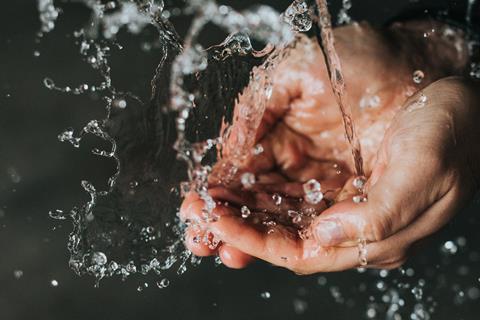Recommendations include smart metering, increasing product efficiency, water labelling and embracing circularity with systems such as rainwater harvesting

Water is fundamental to life – and one of our most precious and undervalued resources.
But recent events have challenged the perception that drought and flooding are rare occurrences. As the climate crisis intensifies, communities are increasingly facing challenges arising from too little and too much water.
As annual water use has risen by around 3,500 billion m3 globally over the last century, effective management of water has never been more important.
BSI partnered with Waterwise to collate traceable data related to water availability, water use and water efficiency/wastage. The report covers the UK, the US, Japan, China, Australia, France and Germany, noting that these are high water consuming countries, while also looking at the role of specific sectors, including retail, healthcare and the built environment.
Thirst for change: securing a water positive future noted that water provision and use contribute around 10% of global carbon emissions, while drought could affect as many as 75% of the world’s population by 2050, meaning inaction now could be as detrimental to the planet as not tackling the climate crisis.

It is estimated that buildings and construction make up over 15% of global freshwater use, although it could be much higher, given that concrete production alone is reported to make up around 9% of global industrial water withdrawals.
Other construction product manufacturing processes that use water include pre-cast concrete and cement-based products, plastics and resins, wood panels, ceramics, glass, paint coatings and steel.
The report set out key issues surrounding water scarcity, alongside recommendations for how the industry, and society as a whole, can help build a water positive future:
- Leakage – Leakage from water supply networks and other sources is a significant issue both in terms of lost revenue and wasted resources. It’s important to recognize water wastage as a serious challenge and act, with utility companies leading the way to reduce network leakage.
- Good design and efficient specifications – This is critical for water saving measures, as the examples of dual flush toilets and water-efficient showers demonstrate.
- Embrace innovation and data sharing – Smart water metering could be an opportunity to reduce leakage and water consumption and a way for governments to drive change on a societal level.
- Water efficiency labelling – It is challenging for domestic and business customers to make informed choices. Ensuring it is easy to choose water-saving products and make sustainable choices is vital. The UK could learn from countries including Australia, which apply mandatory product water efficiency labelling systems aligned with the relevant standard.
- Embracing circularity – Reusing water provides a huge opportunity and should be the norm where possible. This includes rainwater harvesting (RWH) systems, as part of a Sustainable Urban Drainage System (SUDS). Another potential technical solution is the use of desalination to remove salts from seawater.
- Encourage a water-saving culture – Arguably, the most vital need is changing behaviour. Whether at home, in the workplace, or while occupying public spaces, mindfulness when it comes to water usage is key. This includes upholding water efficient practices during the construction of buildings and consideration and mitigation of the water footprint of materials.
- Water neutrality and water positivity are emerging approaches – The former essentially means that the additional water demand on the environment arising from an activity is zero. Some organizations are going further and looking to use the approach to deliver a net gain to the environment – known as “water positive”.
Downloads
BSI Thirst for change - securing a water positive future
PDF, Size 25.47 mb
















No comments yet